4-CHLORO-O-TOLUIDINE HYDROCHLORIDE
- CAS NO.:3165-93-3
- Empirical Formula: C7H9Cl2N
- Molecular Weight: 178.06
- MDL number: MFCD00060226
- EINECS: 221-627-8
- SAFETY DATA SHEET (SDS)
- Update Date: 2024-12-18 14:15:30
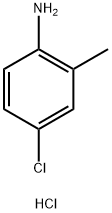
What is 4-CHLORO-O-TOLUIDINE HYDROCHLORIDE?
Chemical properties
The chloromethylanilines are colorless or white crystalline solids or liquids, some have a mild fishy odor.
The Uses of 4-CHLORO-O-TOLUIDINE HYDROCHLORIDE
p-Chloro-o-toluidine and its hydrochloride salt are used in manufacturing azo dyes for cotton, silk, acetate, and nylon and as intermediates in the production of the dyes C.I. 12800, pigment red 7, and pigment yellow 49 (IARC 1990, 2000). p-Chloro-o-toluidine has also been used since the 1960s in the manufacture of the pesticide (insecticide and acaricide) chlordimeform. It is believed that chlordimeformis no longer produced or used worldwide (IARC 1990).
General Description
A white crystalline solid. Toxic by skin absorption and inhalation (dust).
Air & Water Reactions
4-CHLORO-O-TOLUIDINE HYDROCHLORIDE may be sensitive to prolonged exposure to air and light. Water soluble.
Reactivity Profile
Incompatible with acids, acid chlorides, acid anhydrides, chloroformates and strong oxidizing agents. .
Hazard
Toxic by ingestion, inhalation, and skin absorption.
Health Hazard
TOXIC; inhalation, ingestion or skin contact with material may cause severe injury or death. Contact with molten substance may cause severe burns to skin and eyes. Avoid any skin contact. Effects of contact or inhalation may be delayed. Fire may produce irritating, corrosive and/or toxic gases. Runoff from fire control or dilution water may be corrosive and/or toxic and cause pollution.
Fire Hazard
Combustible material: may burn but does not ignite readily. When heated, vapors may form explosive mixtures with air: indoors, outdoors and sewers explosion hazards. Contact with metals may evolve flammable hydrogen gas. Containers may explode when heated. Runoff may pollute waterways. Substance may be transported in a molten form.
Safety Profile
Confirmed carcinogen with experimental carcinogenic data. Moderately toxic by intraperitoneal route. When heated to decomposition it emits toxic fumes of NOx and Cl-. See also other chloro toluidine entries.
Potential Exposure
Most of the isomers are used in dyestuff manufacture. The 3-chloro-para isomer is used to kill birds. It is marketed as pelleted bait for control of bird populations.
Carcinogenicity
p-Chloro-o-toluidine and its hydrochloride salt are reasonably anticipated to be human carcinogens based on limited evidence of carcinogenicity from studies in humans and evidence of carcinogenicity from studies in experimental animals.
Shipping
UN2239 Chlorotoluidines, solid, Hazard Class: 6.1; Labels: 6.1-Poisonous materials. UN3429 Chlorotoluidines, liquid, Hazard Class: 6.1; Labels: 6.1- Poisonous materials
Incompatibilities
Incompatible with oxidizers, strong acids; chloroformates, and acid anhydrides, isocyanates, aldehydes forming fire and explosive hazards.
Properties of 4-CHLORO-O-TOLUIDINE HYDROCHLORIDE
| solubility | DMSO (Slightly), Methanol (Slightly) |
| Colour Index | 37085 |
| form | Solid |
| color | Off-White |
| Stability: | Hygroscopic |
| EPA Substance Registry System | 4-Chloro-o-toluidine hydrochloride (3165-93-3) |
Safety information for 4-CHLORO-O-TOLUIDINE HYDROCHLORIDE
| Signal word | Danger |
| Pictogram(s) |
 Exclamation Mark Irritant GHS07  Health Hazard GHS08  Environment GHS09 |
| GHS Hazard Statements |
H302:Acute toxicity,oral H340:Germ cell mutagenicity H350:Carcinogenicity H370:Specific target organ toxicity, single exposure H372:Specific target organ toxicity, repeated exposure H410:Hazardous to the aquatic environment, long-term hazard |
| Precautionary Statement Codes |
P201:Obtain special instructions before use. P202:Do not handle until all safety precautions have been read and understood. P260:Do not breathe dust/fume/gas/mist/vapours/spray. P264:Wash hands thoroughly after handling. P264:Wash skin thouroughly after handling. P270:Do not eat, drink or smoke when using this product. P273:Avoid release to the environment. P280:Wear protective gloves/protective clothing/eye protection/face protection. P391:Collect spillage. Hazardous to the aquatic environment P307+P311:IF exposed: call a POISON CENTER or doctor/physician. P405:Store locked up. P501:Dispose of contents/container to..… |
Computed Descriptors for 4-CHLORO-O-TOLUIDINE HYDROCHLORIDE
4-CHLORO-O-TOLUIDINE HYDROCHLORIDE manufacturer
New Products
Ethyl 3,3- diethoxypropionate 7-Bromo-2-chloroquinoxaline N-Benzyl-3-hydroxypiperidine 2-(4-bromophenyl)-2-methylpropanoic acid Benzylacetoacetate Radiator Flux Zinc Chloride Solution (All Grades) Phenylazomalononitrile 2-Fluoro-6-iodobenzoic acid 3-(4-bromo-3-methyl-2-oxo-2,3-dihydro-1H-benzo[d]imidazol-1-yl)piperidine-2,6-dione 2,3-Difluoro-6-methoxybenzyl Chloride 2-(6-(benzyloxy)-3,4-dihydronaphthalen-2-yl)-4,4,5,5-tetramethyl-1,3,2-dioxaborolane Ethyl2-oxo-2,3,9,10-tetrahydro-1H-pyrido[3',4':4,5]pyrrolo[1,2,3-de]quinoxaline-8(7H)-carboxylate Acetyl-meldrum's acid 3-(hexyloxy)-4-(pyridin-3-yl)-1,2,5-thiadiazole 2-Hexyn-1-ol Dibenzo-18-crown-6 2-Propanamine, 1-chloro-, hydrochloride (9CI) 3-Pyridineacetonitrile, α-hydroxy- 3-Iodophenylacetic acid N Ethylmethylamine Ethyl Methanesulfonate N N' DimethylEthylenediamine Lead II BromideRelated products of tetrahydrofuran
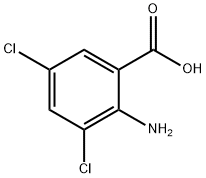
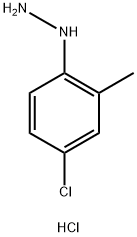
![2-Chloro-N-[4-chloro-2-(2-chlorobenzoyl)phenyl]acetamide](https://img.chemicalbook.in/CAS/GIF/14405-03-9.gif)

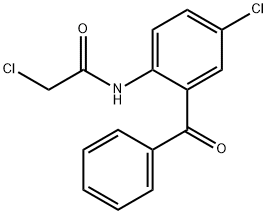

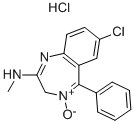
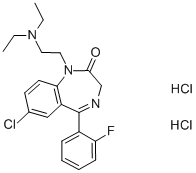
You may like
-
 3165-93-3 98%View Details
3165-93-3 98%View Details
3165-93-3 -
![4-chloro-7H-pyrrolo [2,3-d]pyrimidine 3680-69-1 98%](https://img.chemicalbook.in//Content/image/CP5.jpg) 4-chloro-7H-pyrrolo [2,3-d]pyrimidine 3680-69-1 98%View Details
4-chloro-7H-pyrrolo [2,3-d]pyrimidine 3680-69-1 98%View Details
3680-69-1 -
 4'-Benzyloxy-2-bromopropiophenone 98%View Details
4'-Benzyloxy-2-bromopropiophenone 98%View Details
35081-45-9 -
 53928-30-6 98%View Details
53928-30-6 98%View Details
53928-30-6 -
 5162-90-3 2-Amino-3-(1,2-dihydro-2-oxoquinoline-4-yl)propanoic acid 97%View Details
5162-90-3 2-Amino-3-(1,2-dihydro-2-oxoquinoline-4-yl)propanoic acid 97%View Details
5162-90-3 -
 4-(4-Chlorobenzyl)-2-(1-methylazepan-4-yl)phthalazin-1(2H)-one hydrochloride 98 %View Details
4-(4-Chlorobenzyl)-2-(1-methylazepan-4-yl)phthalazin-1(2H)-one hydrochloride 98 %View Details
79307-93-0 -
 29676-71-9 99%View Details
29676-71-9 99%View Details
29676-71-9 -
 (R)-2-amino-N-benzyl-3-methoxypropanamide 98%View Details
(R)-2-amino-N-benzyl-3-methoxypropanamide 98%View Details
196601-69-1
